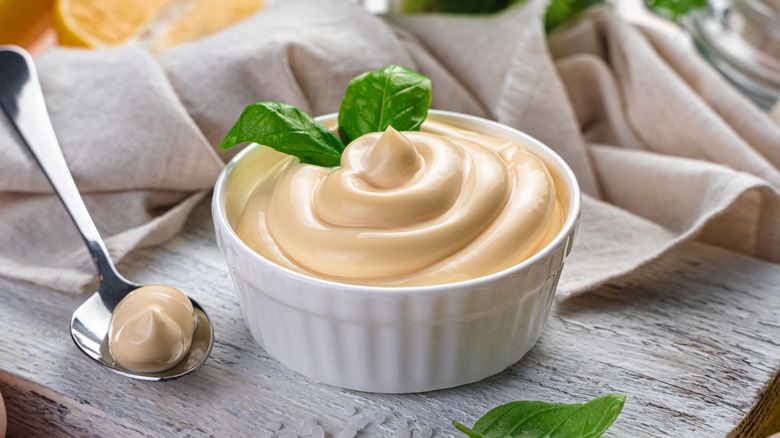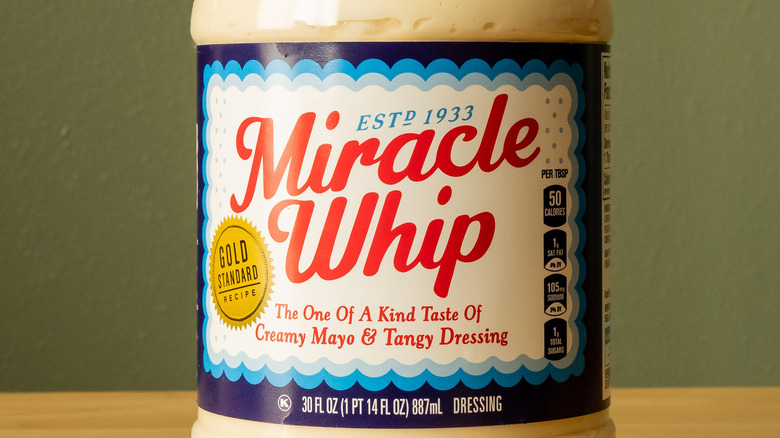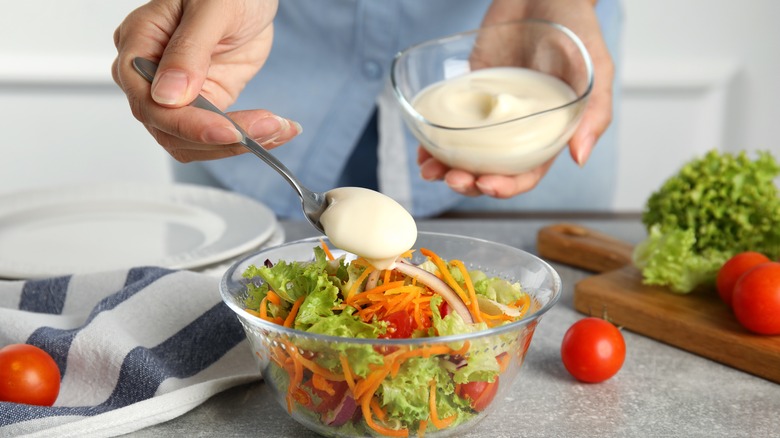What Makes Miracle Whip And Mayo Different?
Many of the important things in life come in pairs — order and chaos, good and evil, and mayonnaise and Miracle Whip. To some, these two condiments are diametrically opposed, and proponents of each side are usually locked in a feral argument over which tastes better. But what is the difference between mayonnaise and Miracle Whip? Does there even need to be such fighting, or can common ground be found?
Mayonnaise, as we know it today, was likely first granted a name and official place in written history around 1756, when the French chef of the Duke de Richelieu whipped it up for a celebration feast, according to Bloomberg. There are conflicting accounts of who invented mayonnaise and when, but Miracle Whip was undoubtedly invented, patented, and first available to the public in Chicago in 1933 during the World's Fair and was marketed as a cheap alternative to mayonnaise, per My Recipes.
Miracle or fraud?
According to How Stuff Works, mayonnaise is an emulsion of egg yolks, oil, acid (typically lemon juice or type of vinegar, per Masterclass), and seasonings. Emulsions take two substances that usually don't mix and beat them together, suspending the separation. When making mayonnaise, you must constantly beat the egg yolks and acid while slowly pouring in a stream of oil until you get a nice creamy sauce.
As far as common ground, Miracle Whip and mayonnaise are made of the same essential components, but there are some key differences, as you can probably taste. Healthline states Miracle Whip is made with other ingredients not found in most mayonnaise recipes. The water, high fructose corn syrup, and soybean oil are responsible for the sweeter flavor of the Miracle Whip in contrast to the richer and often tangier taste of mayonnaise. Miracle Whip also contains a unique blend of spices that include mustard, paprika, and garlic, adding to the taste difference.
Using the two
At their core, mayo and Miracle Whip are very similar condiments. Still, there are a few critical differences in composition, and when you try them, you are certainly going to develop an opinion about their taste. They can be used fairly interchangeably in pretty much all available recipes, per Taste of Home. But as with cooking with wines, use one you like the flavor of.
According to Healthline, Miracle Whip typically contains less fat and calories than mayo but also refined additives, making mayonnaise a slightly healthier choice. The best thing you can do is make your own mayo by whipping up your own healthy blend of egg yolks, oil, and acids (the less inflammatory the oil, the better, per Healthline). Whichever you intend to use in your recipes on your sandwiches, if you have company, make sure you know which side of the argument your guests will be eating on.


